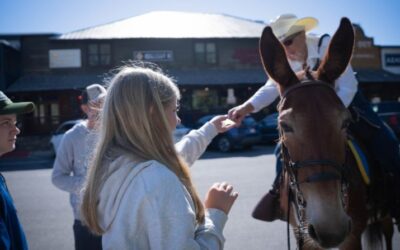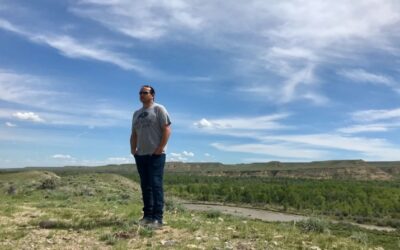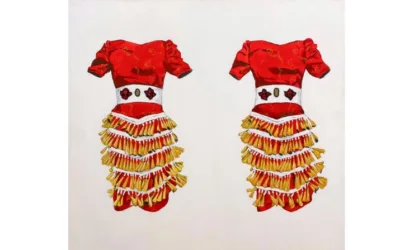Noting the Latin names of various wildflowers comes second nature for Trevor Bloom.
“We’re in the Blacktail sage site. You know, Purshia tridentata …or that antelope bitterbrush is in peak flower. We’ve got the hooded phlox and the longleaf phlox are also flowering. Many of the potentillas are also flowering.”
KHOL met Bloom at the Blacktail Butte Trailhead, where he has been working with local volunteers and teaching them how to take scientific observations of plants — that is, making note of when they leaf out, bloom and bear fruit.
“I walk really slow. I think botanists walk slower than birders, even, when we stop and look at everything along the way and notice what’s going on with the buds and the flowers,” Bloom said. “If you come across a species you don’t know, [botanists] take a guidebook out and try to identify it.”
Drawing on the field notes that the legendary biologist Frank Craighead made on this same trail in the 1970s and ‘80s, Bloom and his volunteers are comparing the lifecycle events of the same species in the same locations today.
“That round trip is just under two miles. It’s like 1.75 miles and it’s flat,” Bloom said, describing the part of Blacktail Butte that’s being observed. “It’s accessible to all ages and most body types. So, we’ve had people aged from four years old to 89 years old complete the trail.”
Once collected, Bloom uses the citizen scientist data to better understand how plants are responding to climate change and also to inform when to collect seeds that will be used in restoration projects throughout the region.
“The onset of flowering for spring wildflowers is on average 17 days earlier now than it was in the 1970s. And that is directly correlated with spring temperatures in March, April and May having increased, and earlier snowmelt timing. The timing of snowmelt in the valley has advanced by about 21 days since the 1970s.”
And when plants flower earlier, or at different times than they did historically, the impact on the wildlife that depend on them can be profound. Take the broad-tailed hummingbird for example. Each summer, the hummingbird migrates from Central America to the Greater Yellowstone Ecosystem, but the plants that they depend on, things like Scarlet Gilia and other wildflowers, are flowering earlier.
Bloom explained what happens next.
“What’s been found is that these birds are arriving at the same time and the flowers have already flowered earlier, resulting in reduced nesting success because they’re not getting the nectar that they needed, which means that these animals need to adapt to this change in climate.”
Another example that may hit even closer to home for Jackson Hole locals concerns grizzly bears. Research shows that bear-human conflict is directly correlated with how good a berry season is, especially in late summer and early fall, when bears need to fill up before going into hibernation. When berry species flower earlier, they also fruit earlier, meaning that bears might have to seek alternative sources of food in the fall — and that’s when the most conflict with humans happens.
The Wyoming Wildflower Watch is one of dozens of citizen science projects around the country that track the seasonal changes in plants and animals, a science known as phenology.
“All the data that we collect here in Teton County goes into an app called Nature’s Notebook and then gets uploaded to a cloud database that’s managed by the USA National Phenological Network,” Bloom said. “And there are these phenology hikes all over the country, but we’re really the only ones centered in the Greater Yellowstone Ecosystem.”
Whether it’s curiosity about wildflowers or concern about climate change, there are all sorts of reasons volunteers have signed up as citizen scientists with the Wildflower Watch. For Noah Osnos, a volunteer who attended the first hike of the season, citizen science is a way to slow down a bit — and smell the proverbial flowers.
“You know, lots of us just walk around looking at the pavement… and you come out here and get a better idea of what’s actually physically happening on the ground,” Osnos said. “Even while we’re living our busy lives, there’s plenty going on in nature that we should be paying attention to.”
If wildflowers are something you want to pay more attention to, the next Wildflower Watch hike is scheduled for Sunday, July 11, from 2-4 p.m. More information can be found in the Wildflower Watch Facebook group.





